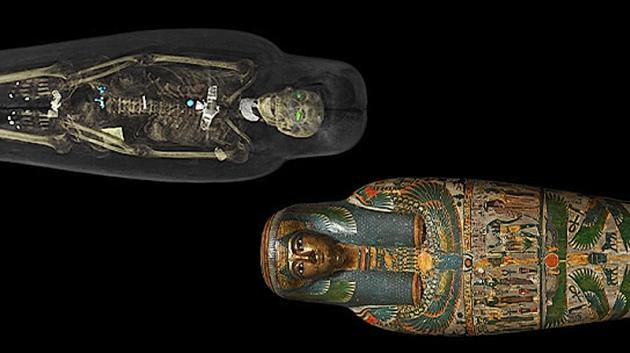The British Museum is well known for its exhibits on Ancient Egypt, ranging from well preserved mummies to giant statues of Pharaohs, with the Rosetta Stone seemingly always having a small crowd surrounding it, attracting many visitors. However, the museum has currently expanded its collection of mummies, for its temporary exhibition on “Ancient lives, new discoveries”, open until 30th November, which gives the viewer a wider learning experience on Ancient Egyptian culture whether they are only interested in ancient mummified corpses or not.
The exhibition focuses on the discovery of eight very different mummies, each with their own identities and stories, something which the exhibition will help the viewer to discover, as well as explaining to viewers the different mummification techniques, and how it reflects on the lives of the people who were mummified. Burial traditions are one of the few ways historians are able to learn about ancient civilizations, so the exhibition also give insights into Ancient Egyptian culture and traditions, using the objects found at burial sites to infer much about the lives of these people.
An interesting feature of the exhibition is the fact that the mummies are unaltered, apparently left in the original state that they were discovered in. The exhibit uses the latest technology to give viewers an interactive experience in which they can remove layers off the corpse, on a screen, until they reach the skeleton, showing them the stages in which corpses were mummified. This proved popular with children especially, as it was something they could get involved in. This method is effective in that it gives the viewers an insight into what the mummies look like under their wrappings, without negatively affecting the artefact itself by exposing it, something which could damage the mummies when they are examined.
As the main features of the exhibition, the mummies themselves were indeed varied and interesting. Out of the eight mummies, none of them were too similar to each other, each giving the viewer a different insight into ancient lives. The mummies varied from young children to adults, from ordinary people to those of higher ranks and from people who had been naturally mummified to those who underwent a full mummification. Viewers going into this exhibit with a casual interest in Ancient Egyptian mummification may be surprised at the different ways in which a corpse can be preserved and how much it can tell us about that person’s life and the physical condition of the body before they died.
The exhibition itself is well organised, as the viewer moves from one exhibit to the next. In between the mummies, there are smaller exhibits which connect the main displays well. They involve collections of artefacts found in and around the mummified corpses, including objects from the museum’s existing collections. These smaller exhibits also provided interest, displaying items that the mummies had been buried with, such as amulets for protection and hieroglyphic scrolls on which spells were written. These give the viewer added insight into the lives of the Ancient Egyptians, and further explain the circumstances surrounding each mummy’s circumstances during their lives and at their death.
For someone who is fascinated by the ancient world, this exhibition proves to be both interesting and entertaining. At first it may seem to be focused on the kinds of mummification that everyone is familiar with, but throughout the exhibition, I found myself learning more about the different ways a body can be preserved, intentional or not. Each of the mummies captured my interest for different reasons, and while some may be put off by the display of dead bodies, I was only intrigued by the ways different people with very contrasting lives were handled when they died. Most interesting for me was the natural mummification, the way that two of the corpses from two very different times had been preserved after being buried in hot sand.
All in all, the exhibition provides an impressive collection of mummies, which can seem both fascinating and repulsing, as well as supplying the viewer with supporting artefacts, both of which provide interesting insight into the lives of these eight mummies. As someone who enjoys learning about the ancient world, the ways in which artefacts, both mummies and burial items included, from so long ago have been carefully preserved continues to amaze me. However, even if you are not inclined to read all the information written around the exhibition, it is worth going to view the mummies that vary greatly in appearance and method of mummification, and it could change the way you have viewed death rituals and Ancient Egyptian culture.
Exhibition runs until 30 November British Museum London
Words: Bushraa Qureshi © Artlyst 2014 Photo: Courtesy British Museum All Rights Reserved

